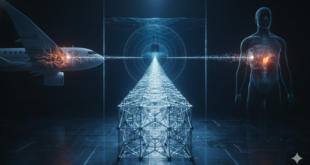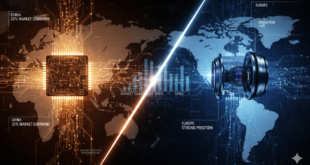Related Articles
Introduction:
Digital holography, a prominent imaging technique, has garnered widespread attention for its ability to capture comprehensive wavefront information of 3D objects. Traditionally, the process involves acquiring a 2D hologram with an interferometer and an image sensor, followed by complex numerical reconstruction. Over the years, this method has faced challenges, particularly in terms of computational demands and the need for extensive prior knowledge to achieve successful reconstructions.
Traditionally complex, expensive, and limited, holography is experiencing a transformative revolution, thanks to the integration of deep learning technologies. In this blog, we explore the exciting developments in holography, powered by the capabilities of artificial neural networks.
The Challenges in Traditional Holography:
Traditional holography methods have faced challenges such as complexity, high costs, and limitations in capabilities. Generating holographic data, especially in real-time scenarios, often required substantial computational power. Additionally, issues like image quality, the ability to capture motion, and the need for specialized equipment hindered the widespread adoption of holography.
Enter Deep Learning:
The advent of deep learning, a subset of artificial intelligence, has ushered in a new era for holography. By leveraging sophisticated algorithms and neural networks, deep learning enables the creation of holograms with unprecedented efficiency and quality. This paradigm shift simplifies hologram creation, enhances image quality, personalizes holographic experiences, and unlocks a myriad of applications across diverse industries.
Simplifying Hologram Creation:
Deep learning algorithms eliminate the need for cumbersome setups and intricate calculations. They can generate holograms directly from digital data, making specialized equipment and expertise obsolete. This simplification democratizes access to holography, making it more accessible and affordable.
Enhancing Hologram Quality:
Deep learning optimizes hologram encoding and reconstruction, resulting in sharper, more detailed images with minimized noise and artifacts. The technology’s ability to learn from data enables the creation of realistic and immersive holographic experiences that surpass the limitations of traditional methods.
Personalizing Holographic Experiences:
One of the most intriguing aspects of deep learning in holography is its capacity to personalize experiences. By learning from user interactions, deep learning algorithms can adapt holograms in real-time, creating customized and interactive experiences. This personalization opens doors to a wide range of applications, from medical imaging to entertainment.
Applications Across Industries:
The potential applications of deep learning-powered holography are vast. Imagine doctors visualizing complex surgeries using holographic models, students exploring historical events through interactive holograms, or architects designing and testing prototypes in real-time. The technology also holds promise in entertainment, manufacturing, and medical diagnostics, among other fields.
Challenges and Future Developments:
While the computational demands of deep learning remain a challenge, ongoing research and development aim to overcome these hurdles. The integration of technologies like eye-tracking and the consideration of individual visual acuity are among the avenues being explored for future advancements in holography.
The “All-in-One” Method:
Researchers at the University of Hong Kong have unveiled an innovative approach that employs a deep neural network for holographic reconstruction. This method addresses the challenges associated with traditional reconstruction techniques by automating the process and eliminating the need for prior knowledge and intricate operations. The deep neural network, after appropriate training, showcases the capability to holographically reconstruct amplitude, quantitative phase, extended focused image, and depth map—all in a single, seamless process.
The automated nature of this “all-in-one” method circumvents the cumbersome operations inherent in conventional holographic reconstruction approaches. Moreover, the necessity for system parameters is eradicated, contributing to a more streamlined and efficient process. One of the most significant advantages lies in the substantial reduction of computational demands, marking a notable departure from the resource-intensive nature of traditional methods.
Qualitative visualization and quantitative measurements have affirmed the superior performance of the learning-based method over its conventional counterparts. The ability to generate a noise-free image without prior knowledge is a testament to the potential of this data-driven approach. The method exhibits versatility, simultaneously handling diverse reconstruction modalities with ease.
Buoyed by the success of this groundbreaking approach, researchers plan to extend its application to high-speed and high-resolution temporal holographic reconstruction of 3D scenarios. The universal applicability of this technique to various digital holographic configurations opens doors to its potential use in biological and industrial applications.
Deep Learning Enables Real-Time 3D Holograms On a Smartphone
In March 2021, MIT researchers unveiled a groundbreaking method that leverages deep learning to generate real-time 3D holograms on consumer-grade devices, such as laptops and smartphones. Traditional holographic video displays faced challenges in generating holographic data, often requiring significant computational power. As such, generating holographic video has often required a supercomputer’s worth of computing power. The MIT team addressed this by employing deep learning, allowing a convolutional neural network to efficiently produce holograms, reducing the computational load.
By utilizing a custom database of 4,000 computer-generated images with color and depth information, the network learned to generate holograms from input images, achieving impressive results. The system, requiring less than 620 kilobytes of memory, demonstrated the ability to generate 60 color 3D holograms per second on a single consumer-grade GPU. With potential applications in virtual reality, augmented reality, and various fields such as 3D printing and microscopy, this innovative deep learning approach opens new avenues for real-time holographic experiences on everyday devices. Future research may explore enhancements such as eye-tracking technology and personalized holograms based on visual acuity.
Researchers suggest a new method that employs deep learning to create three-dimensional holograms from two-dimensional colored images.
Holograms, with their immersive 3D representation of objects, are highly valuable across diverse sectors such as medical imaging, manufacturing, and virtual reality. However, traditional holography faces challenges in computational complexity and specialized equipment requirements. Recent deep-learning methods have eased these challenges by generating holograms directly from 3D data captured with RGB-D cameras. The newly proposed approach takes a step further, generating 3D holograms directly from regular 2D color images captured using ordinary cameras.
Led by Professor Tomoyoshi Shimobaba, the research team employs a three-stage deep learning process. The first deep neural network predicts a depth map from a regular color image, offering insight into the image’s 3D structure. The second network utilizes both the original RGB image and the depth map to generate a hologram. Finally, the third network refines the hologram for display on different devices. The approach outperformed a state-of-the-art graphics processing unit in terms of processing speed. Notably, the cost-effectiveness of this method, coupled with its ability to generate natural 3D images without relying on depth information during hologram generation, holds promise for future applications in heads-up displays, head-mounted displays, and in-vehicle holographic head-up displays.
This significant achievement opens doors for advancements in ubiquitous holographic technology, showcasing the potential for transformative applications in various fields. The study, titled “Multi-depth hologram generation from two-dimensional images by deep learning,” was published in the journal Optics and Lasers in Engineering on August 2, 2023.
While the potential is vast, challenges such as computational demands and ensuring holographic accuracy persist. Ongoing research and development are essential to overcoming these hurdles. It’s crucial to understand that deep learning in holography complements traditional methods rather than replacing them. This approach democratizes holography, making it more accessible and affordable for a broader audience.
Recent Breakthroughs
The field of deep learning in holography is rapidly evolving, with exciting breakthroughs happening all the time. Here are some of the latest advancements that are pushing the boundaries of what’s possible:
1. Hologram generation from 2D images: Researchers at Chiba University have developed a novel method that directly generates holograms from 2D photos taken with standard cameras. This eliminates the need for specialized holographic setups, making hologram creation much more accessible.
2. Autofocusing and phase recovery: Deep learning algorithms can now perform both autofocusing and phase recovery simultaneously, leading to high-quality reconstructions from single hologram measurements. This significantly improves the depth-of-field and clarity of reconstructed images.
3. Phase staining and brightfield holography: New deep learning-based approaches are emerging for phase staining and brightfield holography, enabling the visualization of features that were previously invisible. This unlocks new possibilities for applications in bioimaging and material science.
4. Randomness-assisted in-line holography: Researchers have developed a technique that uses randomness to improve the quality of in-line holograms. This opens up opportunities for high-resolution imaging of biological samples and other delicate objects.
5. Generative models for holographic displays: Deep generative models are being used to create realistic holographic displays with improved depth perception and reduced speckle noise. This paves the way for more immersive and interactive holographic experiences.
6. Holographic beam shaping and manipulation: Deep learning is being explored for dynamically shaping and manipulating holographic beams, enabling real-time control over the properties of light. This has potential applications in optical communications and laser processing.
7. Compressed holography and reconstruction: Deep learning algorithms can compress holographic data significantly without sacrificing reconstruction quality. This reduces storage requirements and transmission bandwidth, making it easier to share and distribute holographic content.
8. Holographic object recognition and tracking: Deep learning is enabling real-time object recognition and tracking within holographic scenes. This opens up possibilities for interactive holographic applications like augmented reality and virtual reality.
These are just a few of the exciting breakthroughs in deep learning-powered holography. As research continues, we can expect to see even more advancements in the years to come, leading to a future where holograms are an integral part of our lives, transforming the way we interact with information and the world around us.
Conclusion:
The marriage of deep learning and holography has ushered in a new era of efficiency and automation. Deep learning’s transformative impact on holography is undeniable. As we stand on the brink of a new era, the convergence of these technologies promises to make holographic experiences an integral part of our daily lives. From personalized entertainment to groundbreaking medical applications, the fusion of deep learning and holography opens a realm of possibilities that were once confined to the realms of science fiction. As research and innovation continue to unfold, we eagerly anticipate the limitless potential that deep learning holds in shaping the future of holography.
 International Defense Security & Technology Your trusted Source for News, Research and Analysis
International Defense Security & Technology Your trusted Source for News, Research and Analysis




